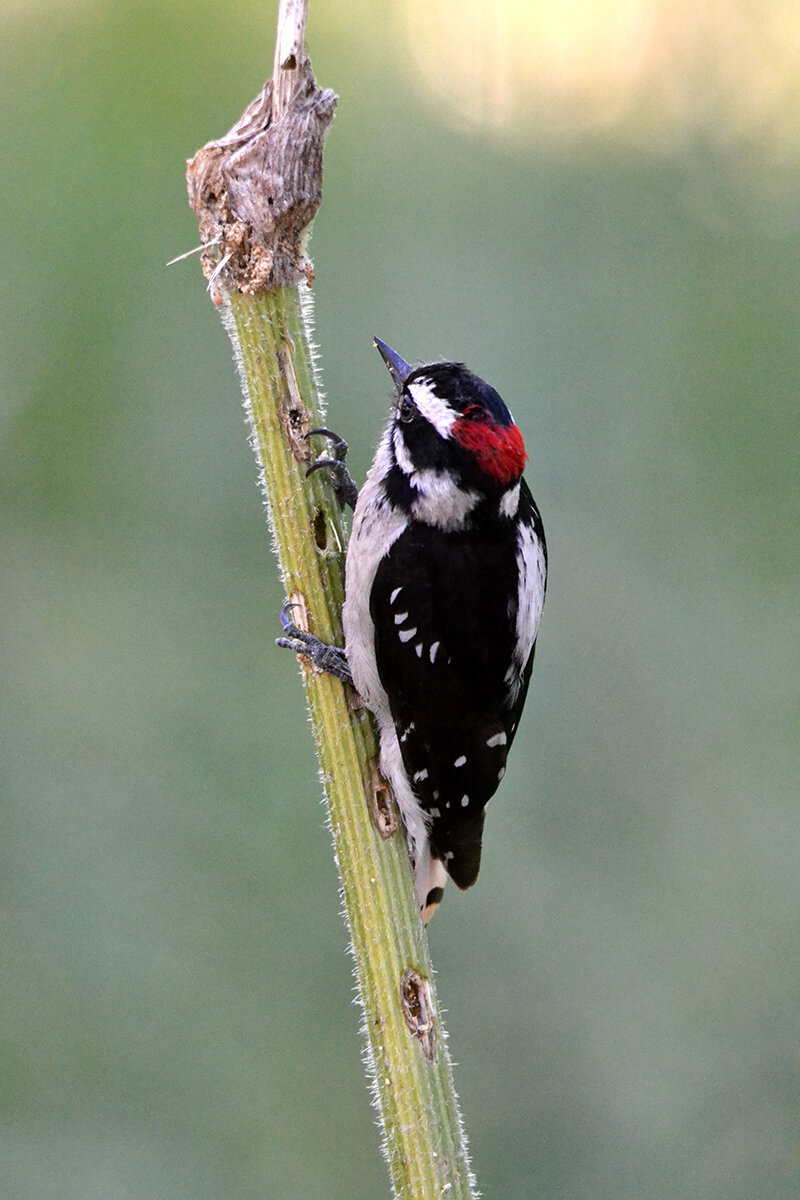The Western Wood-Pewee has been, in my experience, the last bird nesting of the season out at the arboretum. That said, there was a robin’s nest nearby where the fledglings just left the nest within the last week. The baby pewees look as if they are going leave the nest any day now. They are fluttering their wings, preening their feathers regularly and perching on the side of the nest. There are three in the nest which seems crowded and hard to believe when you look at the size of the nest.
The parents stay close by to the nest. They could easily be back at the nest at a moments notice if a predator, such as a Steller’s jay, gets too close. The parents perch on small, exposed tree branches as they watch for insects flying by. They will swoop out in a small loop to catch an insect, and they will often return back to the same spot as if an invisible rubber band snapped them back.
The babies have insatiable appetites, and the parents are returning every couple of minutes to stuff food in their bright yellow bills. I can hear the babies almost constantly calling out from the nest to be fed.
I am sure the parent pewees welcome the closing of the day to get some well deserved rest.


























































































